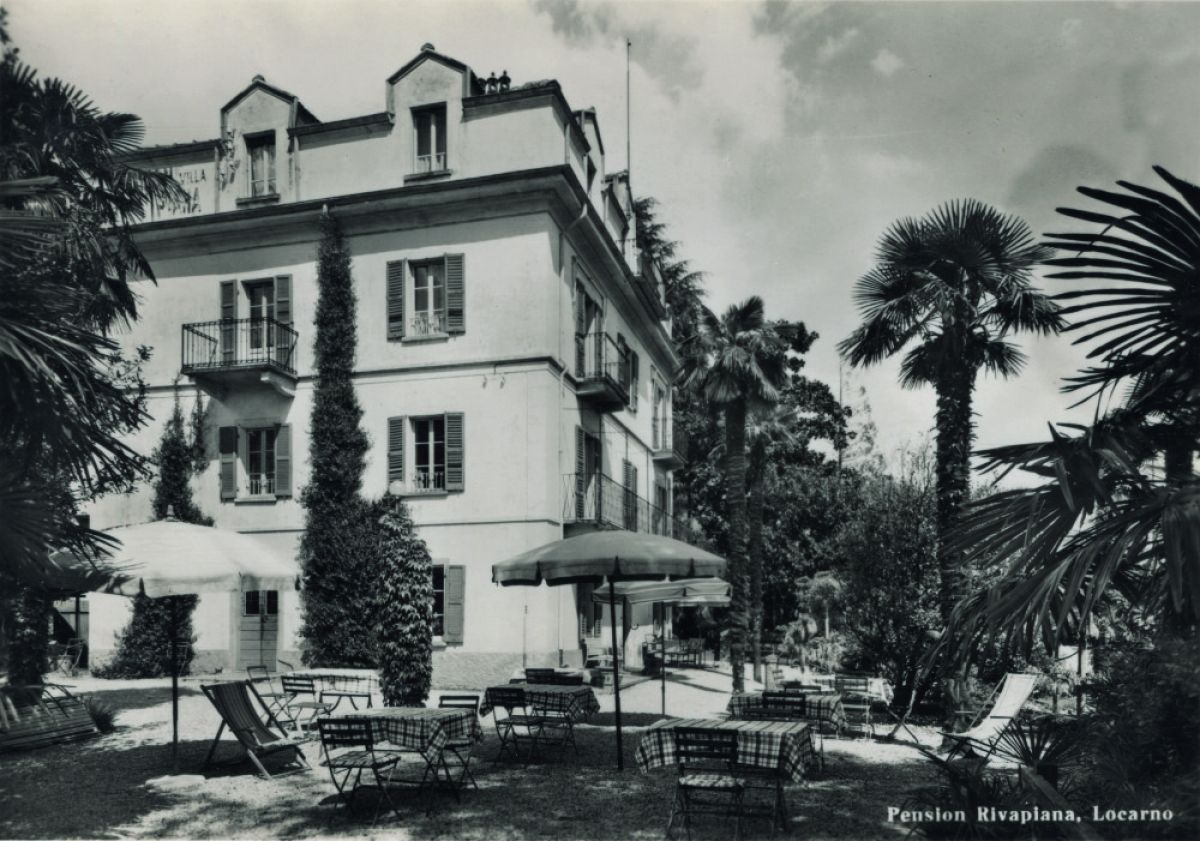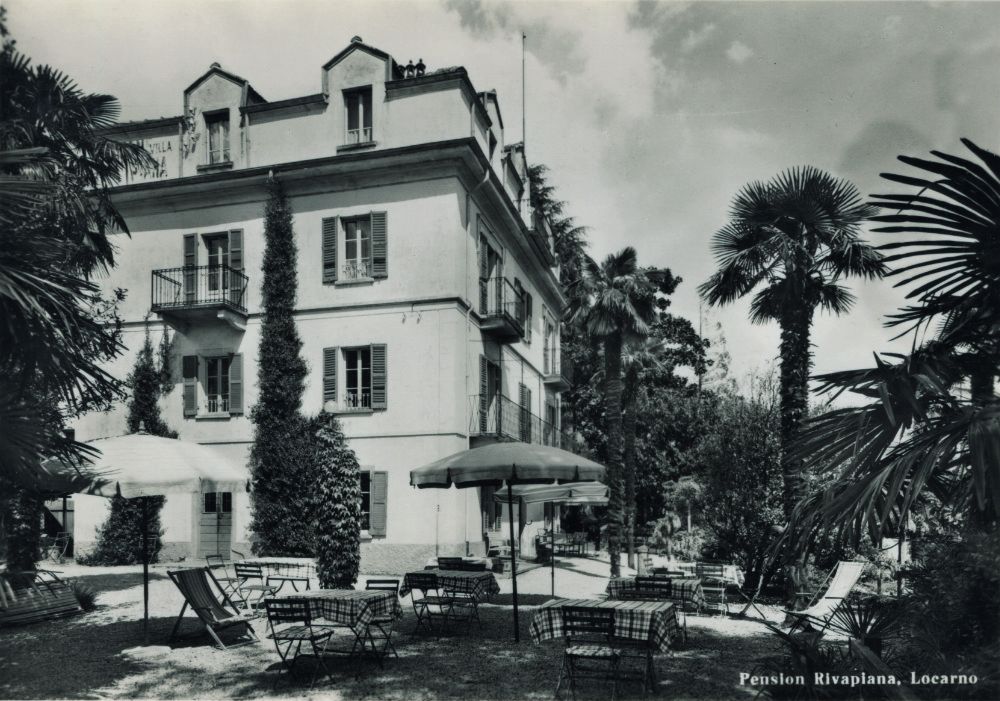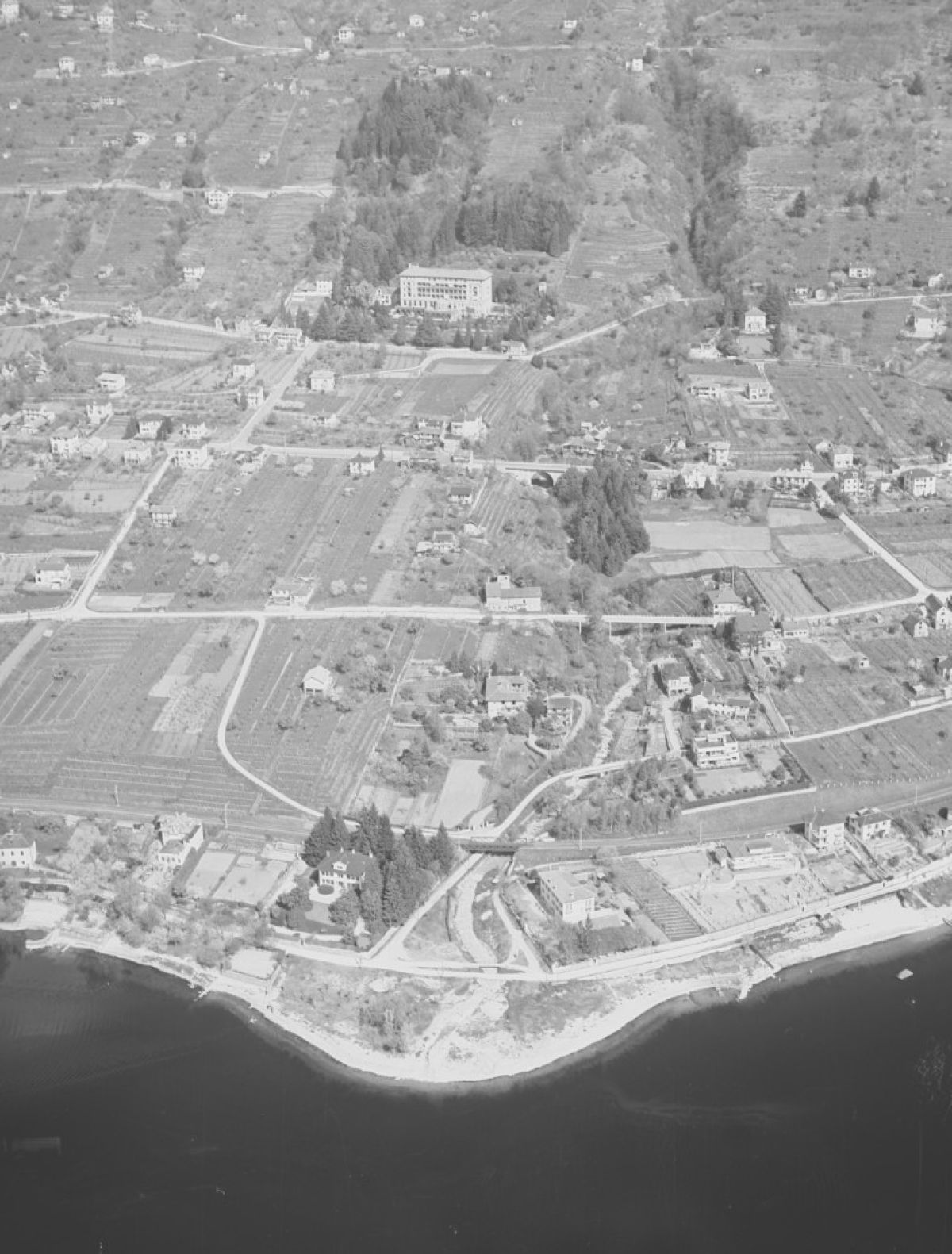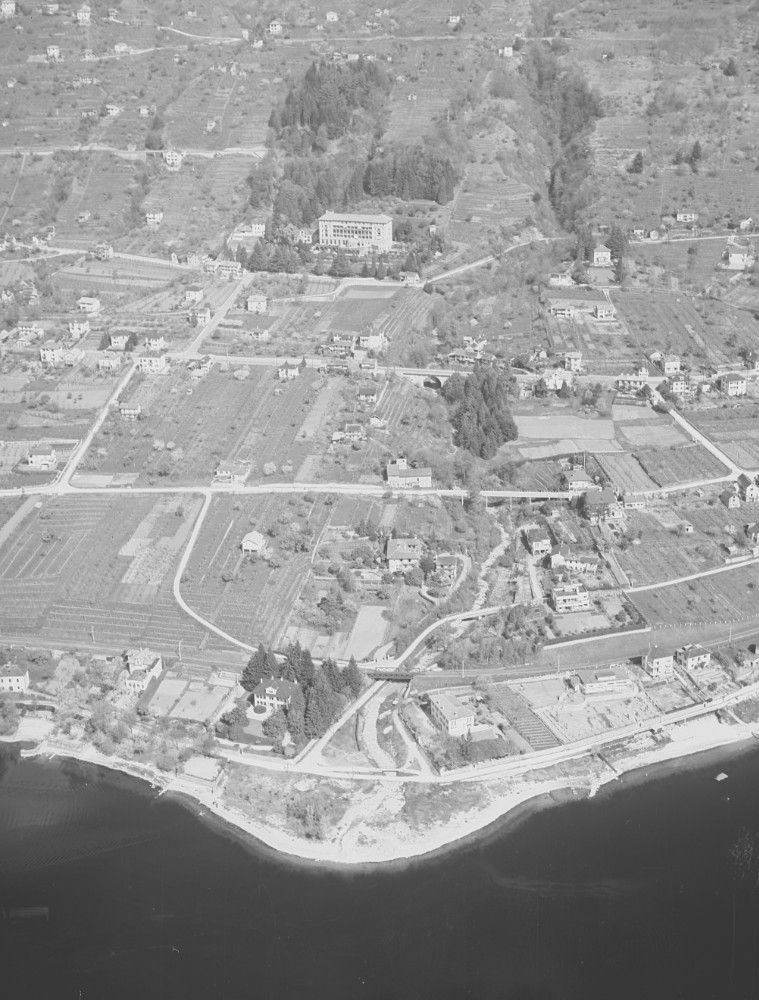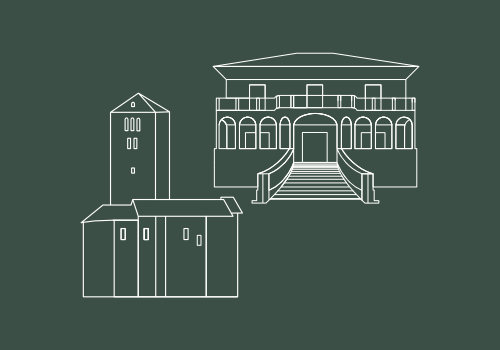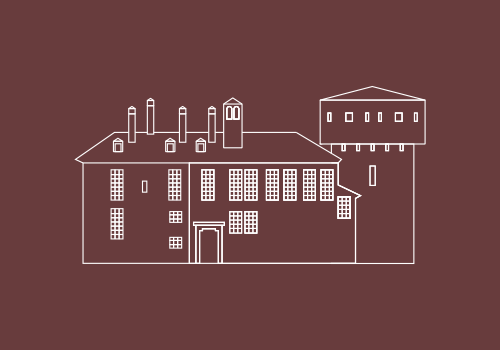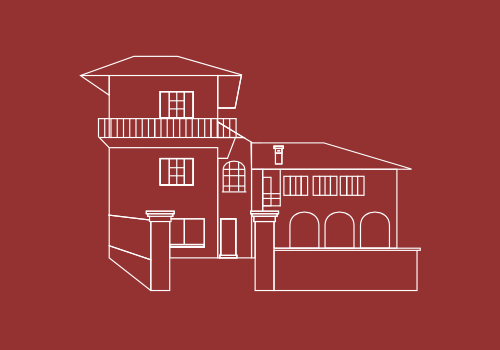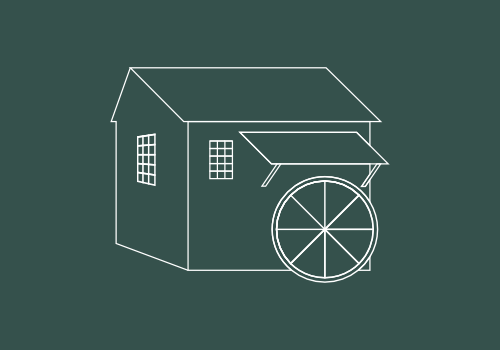Navegna

From Contra and Mergoscia there was a route down to the lake along the Navegna river. In the past, a market was also held at the river’s mouth. This meant it was an ideal spot to build a place for refreshment, a small restaurant which became the Navegna hotel and restaurant as tourism developed (renamed the ‘Giardino Lago’ after extensive redevelopment).
Rivapiana pension
Climbing a gentle trail along the Navegna river brings you to the Esplanade hotel and the Casa Rea retirement home. By the end of 19th century, the waters of the Navegna were already being used to provide electricity for the tourism and public buildings being developed. The small artificial basin in Tendrasca (municipality of Brione s/M) still bears testament to this today.
Aerial photograph, 1943
The river’s delta can be seen in the foreground while further upstream are the gorges covered by forest. The photo taken in 1943 also shows the remnants left by the army which set up headquarters in the Navegna restaurant during the war.
The Navegna river rises in the Cima della Trosa and runs down through the Val Resa before entering the lake after a fall in altitude of around 1600 metres. The river was partially re-naturalised recently by installing some ponds to encourage upstream fish migration and by planting willow trees along the riverbanks which slow down the flow of the water and reduce erosion.
The Navegna river rises in the Cima della Trosa and runs down through the Val Resa before entering the lake after a fall in altitude of around 1600 metres. The river was partially re-naturalised recently by installing some ponds to encourage upstream fish migration and by planting willow trees along the riverbanks which slow down the flow of the water and reduce erosion.
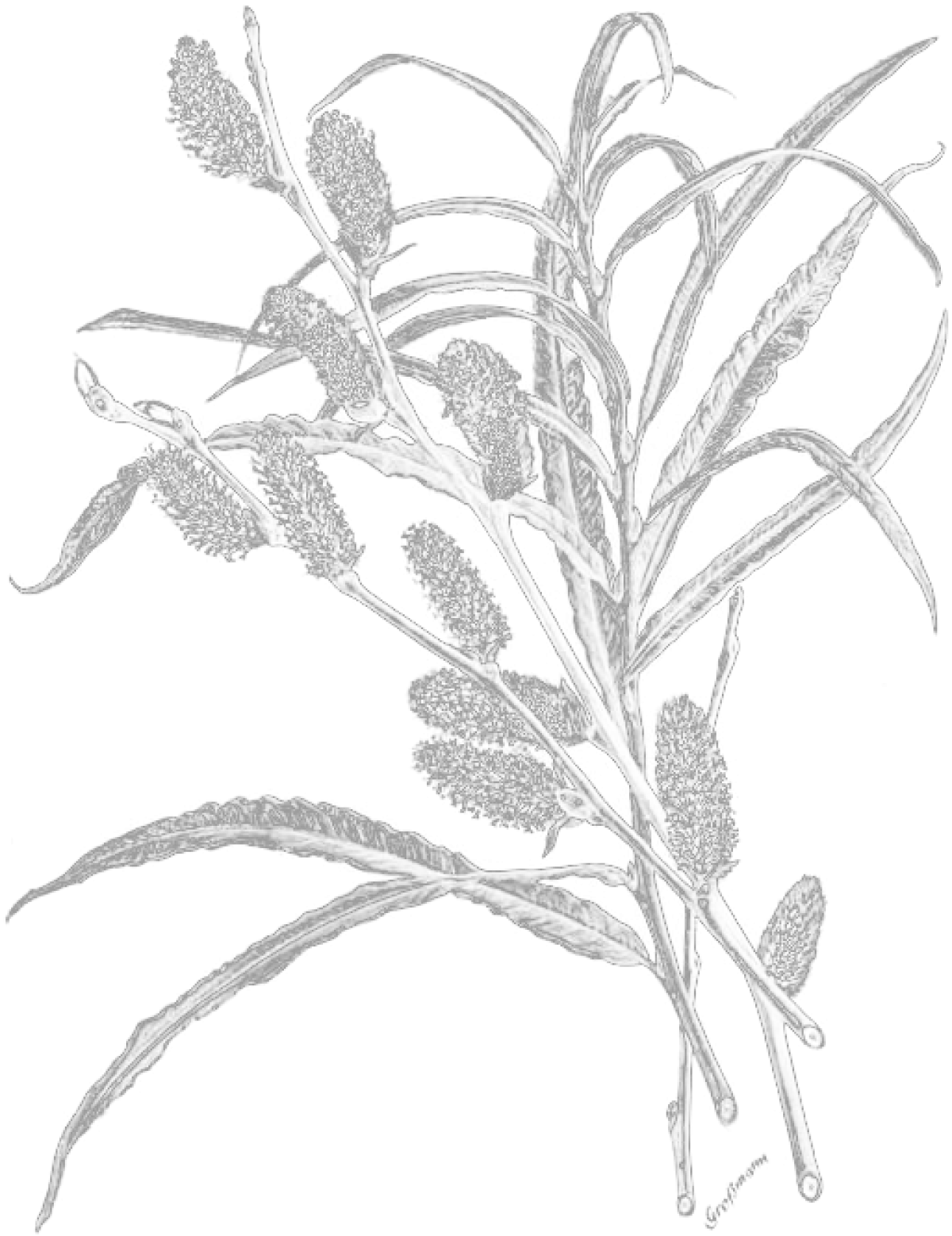
Wicker willow (Salix viminalis)
Part of the large family of willow trees, the Common Osier Willow – pioneer trees capable of growing independently on the banks of lakes and rivers – has very close ties with farming culture. It is an unpretentious tree that grows rapidly and from which farmers take the softest branches to tie up grapevines or to make baskets and various other containers, including panniers.

